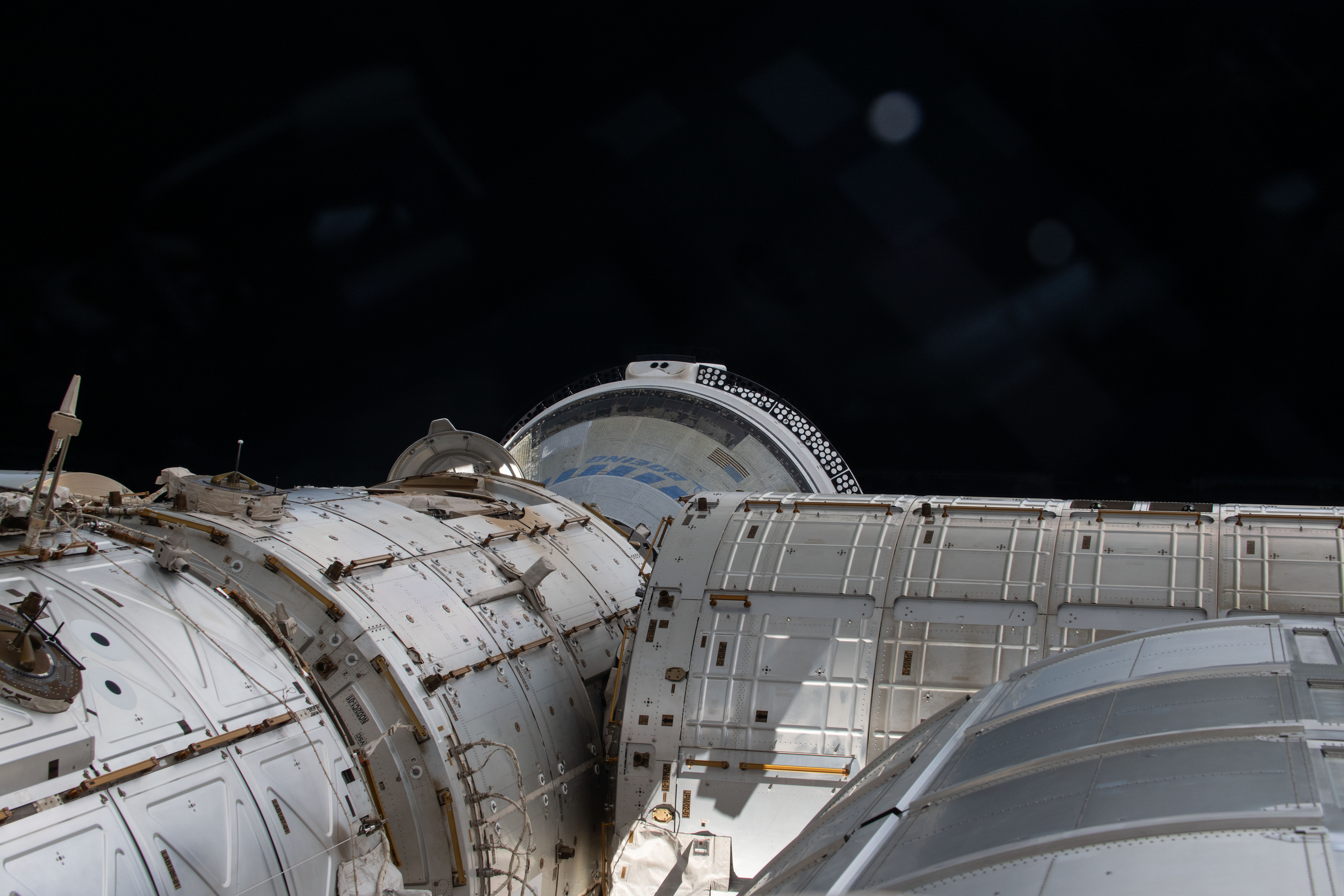
Crew Flight Test (CFT) Commander Barry “Butch” Wilmore and Pilot Suni Williams are targeting a return to Earth no sooner than Saturday, 22 June, as the first crew-carrying shakedown mission of Boeing’s CFT-100 Starliner spacecraft continues at the International Space Station (ISS). Previously scheduled to return early next week, the domino-like effect of Thursday’s postponed-then-rescheduled Extravehicular Activity (EVA) by Expedition 71 astronauts Tracy Dyson and Matt Dominick and the need “to finalize departure planning and operations” for CFT factored into the decision to afford Wilmore and Williams more time aboard the sprawling orbital complex.
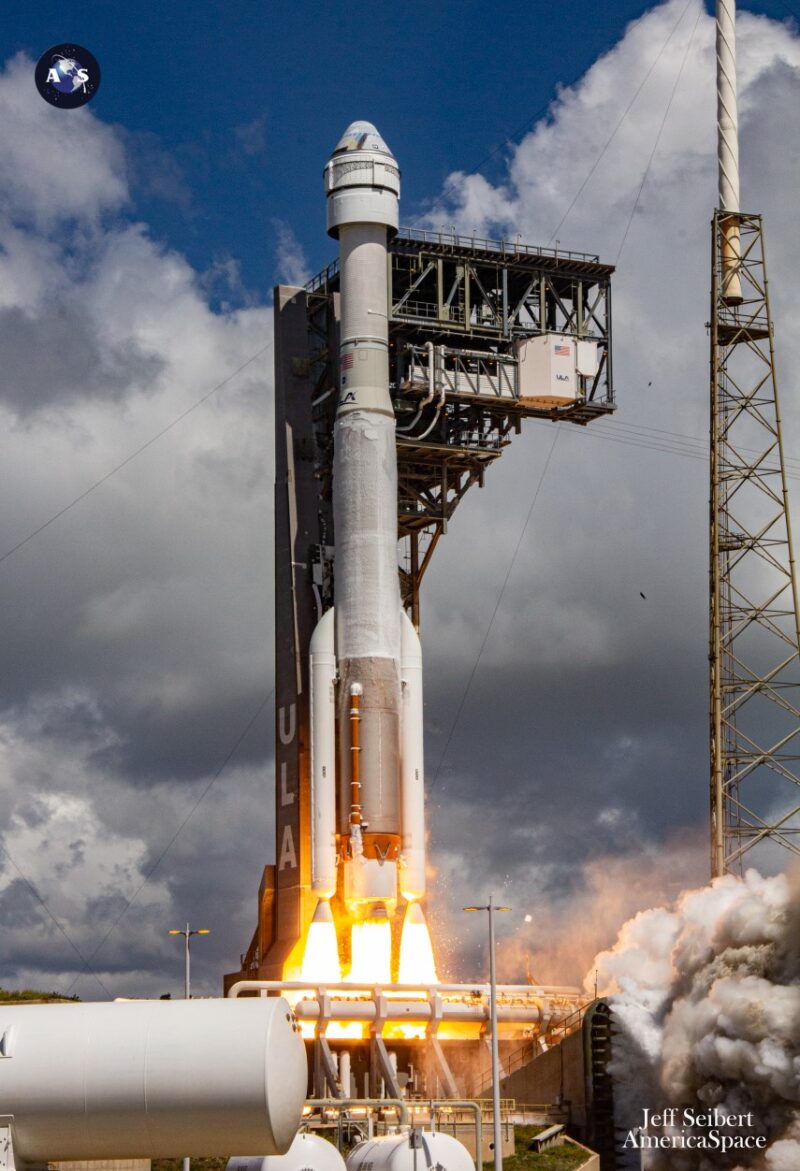
As previously reported by AmericaSpace, Wilmore and Williams—both retired U.S. Navy captains, veteran ISS commanders and seasoned shuttle and Soyuz flyers—launched atop a United Launch Alliance (ULA) Atlas V rocket from storied Space Launch Complex (SLC)-41 at Florida’s Cape Canaveral Space Force Station during an “instantaneous” window at 10:52:15 a.m. EDT on 5 June. It was the third attempt to get the long-delayed CFT mission airborne, following a scrub on the evening of 6 May due to a faulty oxygen relief valve on the Dual-Engine Centaur (DEC) upper stage and a Ground Support Equipment (GSE) issue that cropped up less than four minutes prior to liftoff on 1 June.
The 172-foot-tall (52.4-meter) Atlas V for CFT was flying in its rarely used “N22” configuration, previously employed for Starliner’s uncrewed Orbital Flight Tests (OFTs) in December 2019 and May 2022. This particular configuration of the rocket—which ULA CEO Tory Bruno dubbed “The Bodyguard”, on account of its human-hauling capability—employs No (“N”) payload fairing, a pair (“2”) of Aerojet Rocketdyne-built AJ-60 solid-fueled boosters and the two (“2”) engines of the DEC.
The mission marked the 100th outing of an Atlas V since August 2002. And it was the first voyage of humans on a member of the long-serving Atlas family of rockets in more than six decades, following on the heels of the history-making flights by “Original Seven” Project Mercury astronauts Gordon Cooper, Scott Carpenter, Wally Schirra and John Glenn between February 1962 and May 1963.
Rising from Earth under a liftoff thrust of 1.6 million pounds (725,500 kilograms), Wilmore and Williams rode the combined beast for 140 seconds until the twin AJ-60s burned out and separated cleanly and on time. Four and a half minutes into ascent, as planned, the RD-180 engine of the Atlas V’s Common Core Booster (CCB) shut down and separated, leaving the DEC to propel them for seven minutes and 15 seconds into a suborbital trajectory, inclined 51.62 degrees to the equator and a height of 112.8 miles (181.5 kilometers).
Fourteen minutes after leaving the Space Coast, Starliner separated from the DEC and began its 25-hour, 16-orbit trek to the ISS, with two docking “windows” available—the first opening at 12:15 p.m. EDT on 6 June, the second a little over an hour later at 1:33 p.m. EDT. In addition to Wilmore and Williams, CFT carried about 760 pounds (345 kilograms) of cargo in the form of 25 Boeing bags and ten NASA bags with 307 pounds (139 kilograms) of food tools, life-support equipment and a replacement pump for the space station’s Urine Processor Assembly (UPA).
During their daylong transit to the ISS, the astronauts performed manual piloting tests, reorienting Starliner to facilitate communications via its service module antenna with NASA’s Tracking and Data Relay Satellite System (TDRSS), demonstrate the solar charging of internal batteries and manually test on-board star trackers. Wilmore and Williams also trialed the capability to “pull away” from the space station in a contingency and evaluated their ability to manually put Starliner into the direction needed for re-entry.
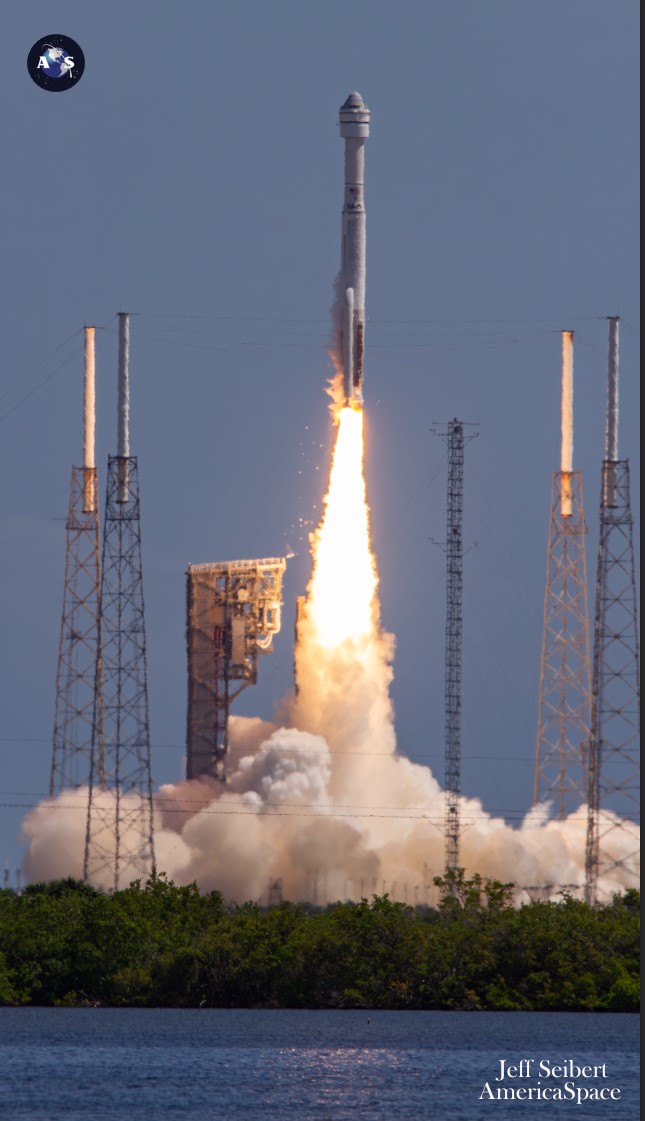
But shortly before bedding down for their first night’s rest, flight controllers notified them of three helium leaks—one that was discussed prior to launch, plus two “new” ones—aboard Starliner, which prompted the isolation of three helium manifolds to monitor and manage them during CFT’s on-orbit time. Those manifolds were reopened in readiness for Starliner’s attitude adjustment burn and remained open through rendezvous and docking.
Early on 6 June, as Starliner approached the ISS, five Reaction Control System (RCS) thrusters failed “off”, but four were later recovered through a series of hot-fire tests as Wilmore and Williams guided the spacecraft inside the station’s 660-foot (200-meter) “hold point”. By now, teams had opted for the second docking window, opening at 1:33 p.m. EDT. Approaching closer, the astronauts executed a pre-planned hold at 33 feet (10 meters) and finally achieved a hard-docking at the forward-facing port of the station’s Harmony node at 1:34 p.m. EDT, just short of 27 hours after launch.
“It’s nice to be attached to the big city in the sky,” said Wilmore. “It’s a great place to be. We are looking forward to…getting all the things done in Starliner we need to get done and also on station.”
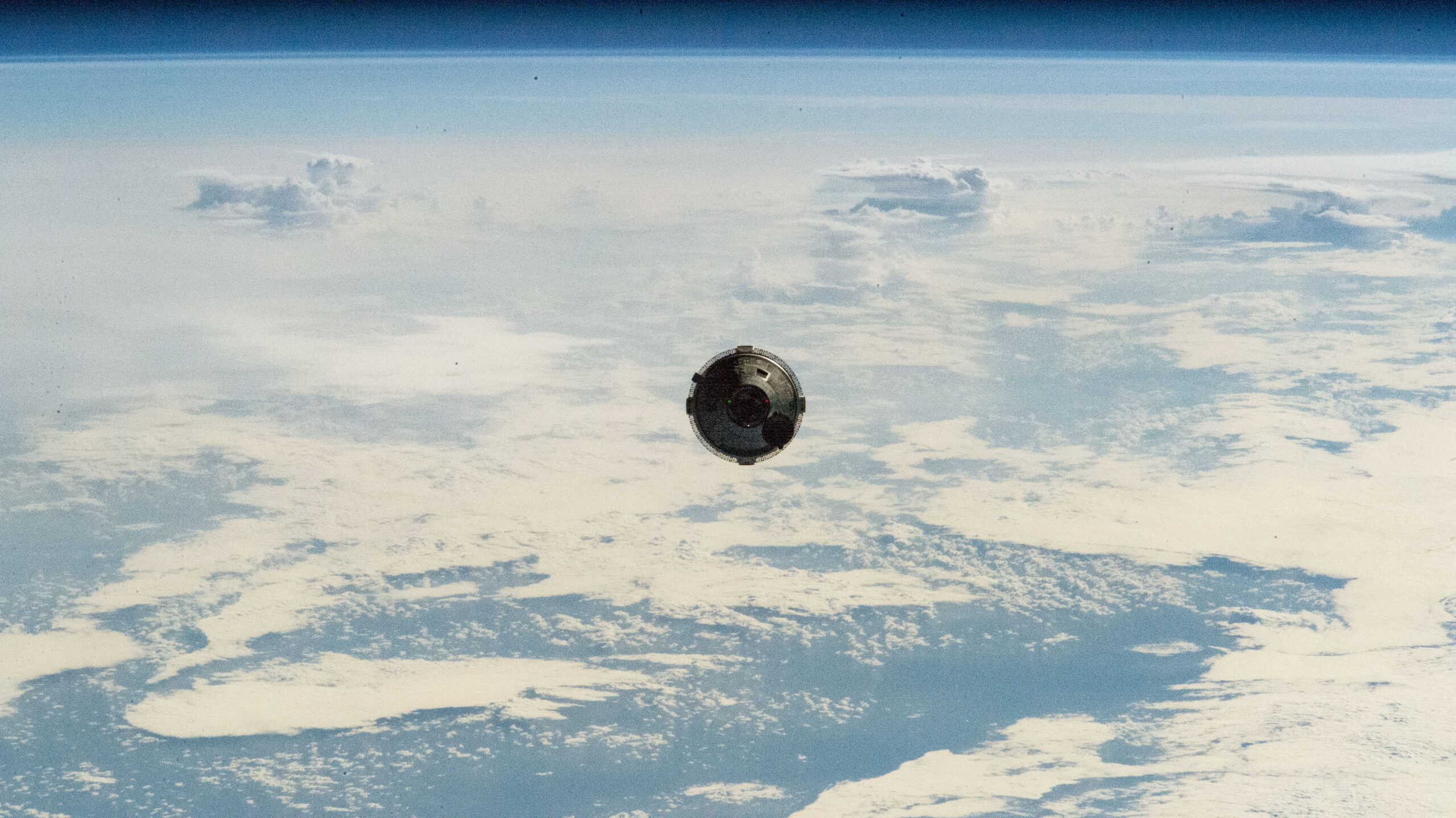
After a couple of hours devoted to pressurization and leak checks, at 3:45 p.m. EDT a very happy Wilmore and Williams floated aboard, their exuberant joy triggering laughs from the incumbent Expedition 71 crew of Commander Oleg Kononenko, his Russian crewmates Nikolai Chub and Aleksandr Grebenkin, plus NASA’s Matt Dominick, Mike Barratt, Jeanette Epps and Tracy Dyson. In his remarks, Wilmore paid tribute to their exceptional welcome with music and even Dominick’s zero-G “dancing”.
“Butch and Suni, we are glad to see you,” said Kononenko, who earlier this month became the first human to accrue more than 1,000 days in space across his five-mission career. “We want to congratulate the whole team…for launch, for docking. Very happy!”
“I’m not sure we could’ve gotten a better welcome,” said Wilmore. “We had music, Matt was dancing. It was great! What a wonderful place to be!”

In fact, Wilmore’s only concern was that Dominick had occupied the crew quarters he had previously occupied during his six-month Expedition 41/42 increment during the winter of 2014 into spring 2015.
“Little dance party,” added Williams. “That’s the way to get things going!”
And those “things” got going rapidly. After a longer sleep period after docking, the CFT crew spent 7 June unpacking cargo, charged their tablet computers and reviewed emergency procedures to prepare for a “Safe Haven” period of isolation inside Starliner to demonstrate procedures for an emergency departure or the need to hunker-down the crew in the event of a space debris incident, including powering-up and rapid checkout of spacecraft systems if an imminent undocking was needed.
Early on the 8th, Starliner’s systems were powered down, then back up, for Safe Haven. To demonstrate the spacecraft’s ability to complete such a role with a full crew of four aboard, Dominick and Dyson joined Wilmore and Williams aboard the capsule for a number of hours. “We went through that process today, closing the hatches, and it was quite a successful event,” was Wilmore’s summary of the activity.
The Safe Haven also allowed the foursome to assess air circulation inside the spacecraft, together with sleeping arrangements, privacy space and the ability to don and doff space suits and facilitate storage. Starliner was then powered down into “quiescent” mode, as will happen on operational long-duration missions, beginning in 2025.
Over the next few days, Wilmore and Williams worked on a dual plate of CFT and station tasks. They performed a dry run of the power-up procedures of Starliner, ahead of undocking, installed window covers for future long-duration crews and performed space-to-space audio checks. ISS CAPCOM Neal Nagata also advised the duo that their stay was being extended until at least 18 June, in support of additional ISS activities and to leverage their support during the planned U.S. EVA-90 by Dyson and Dominick on 13 June.
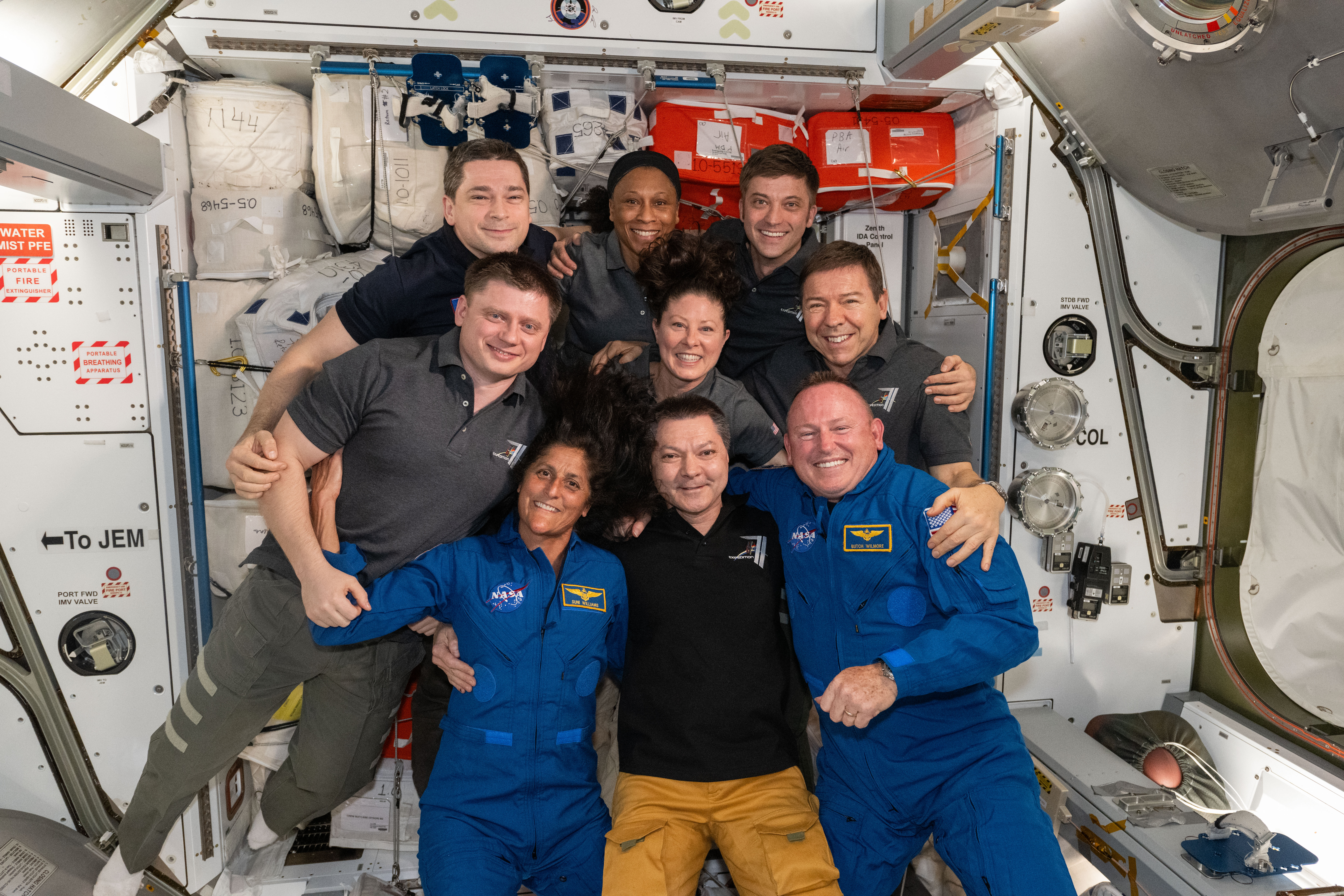
Elsewhere, the astronauts supported continuing ISS operations, with Wilmore working on computer maintenance in the Microgravity Science Glovebox (MSG) and Williams installing hardware in support of the Solid Fuel Ignition and Extinction-Material Ignition and Suppression Test (SoFIE-MIST). The latter forms part of an ongoing research thrust to understand the effect of fire growth and behavior and material flammability in the microgravity environment.
In the meantime, ground teams continued evaluations of Starliner’s RCS thruster issues. One remained deselected, with plans to fire all 28 thrusters after undocking to collect additional data before the service module is discarded prior to re-entry.
The helium leakage rates were also considered to allow “plenty of margin” for Wilmore and Williams’ return home. Teams noted that Starliner would only require about seven hours of free-flight time to perform nominal end-of-mission operations and stressed that the spacecraft carried enough helium—even after discounting a week of loss—to support more than 70 hours if necessary.

As Starliner was placed into a quiescent state and minimal power mode, last week the CFT crew effectively became an integral part of Expedition 71, supporting biomedical research and gene sequence training. Wilmore inventoried the Human Research Facility (HRF) to check items such as blood tube kits, saliva sample packs and gloves, while Williams worked on procedures to gather microbial samples, extract DNA and sequence genes to better understand the behavior of bacteria and fungi in ISS water systems.
Williams’ work supported the Genes in Space Molecular Operations and Sequencing (GiSMOS), which also seeks to accurately represent the microbial “community” aboard the station’s Water Recovery System (WRS) due to bias caused when samples are returned to Earth for analysis. Elsewhere, Wilmore completed cargo stowage checks and on 13 June Williams assisted Barratt and Epps to suit-up Dyson and Dominick for EVA-90.
Unfortunately, that spacewalk—the first of three U.S. EVAs planned in the next few weeks—was called off shortly before it was due to begin, following a call of a “crew discomfort” issue. EVA-90 has now been moved to No Earlier Than (NET) 24 June, as NASA and Boeing prioritizes CFT’s return to Earth.
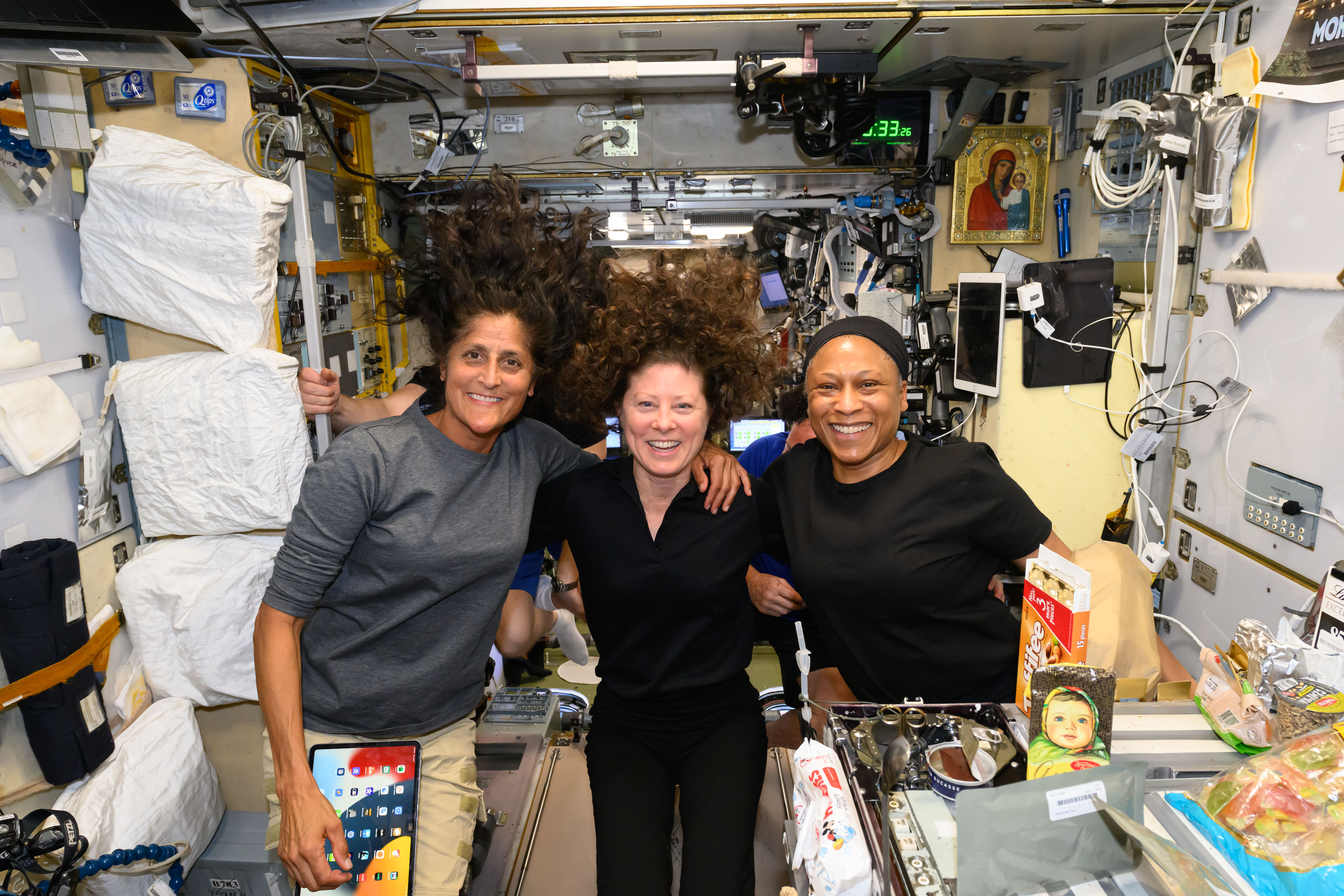
And that return draws ever closer, with teams identifying NET 22 June for the departure of Wilmore and Williams after a 16-day mission. “We are continuing to understand the capabilities of Starliner to prepare for the long-term goal of having it perform a six-month docked mission at the space station,” said NASA Commercial Crew Program Manager Steve Stich. “The crew will perform additional hatch operations to better understand its handling, repeat some safe-haven testing and assess piloting using the forward window.”
Over the next week, seven of Starliner’s eight aft-facing thrusters will be hot-fired in a pair of “burns”, lasting a second apiece, to evaluate their performance. And Wilmore and Williams will investigate cabin air temperatures, before returning to Earth with about 750 pounds (340 kilograms) of cargo, including an empty Nitrogen Oxygen Recharge System (NORS) tank.
Undocking is set to occur about 6.5 hours prior to landing, a little sooner than it would happen on operational missions in order that Wilmore and Williams can perform additional tests. CFT will perform a minute-long deorbit “burn” over the Pacific Ocean, with four landing zones—two areas at White Sands, N.M., plus two others at Willcox Playa, Ariz., and Dugway Proving Grounds, Utah—available to the crew.
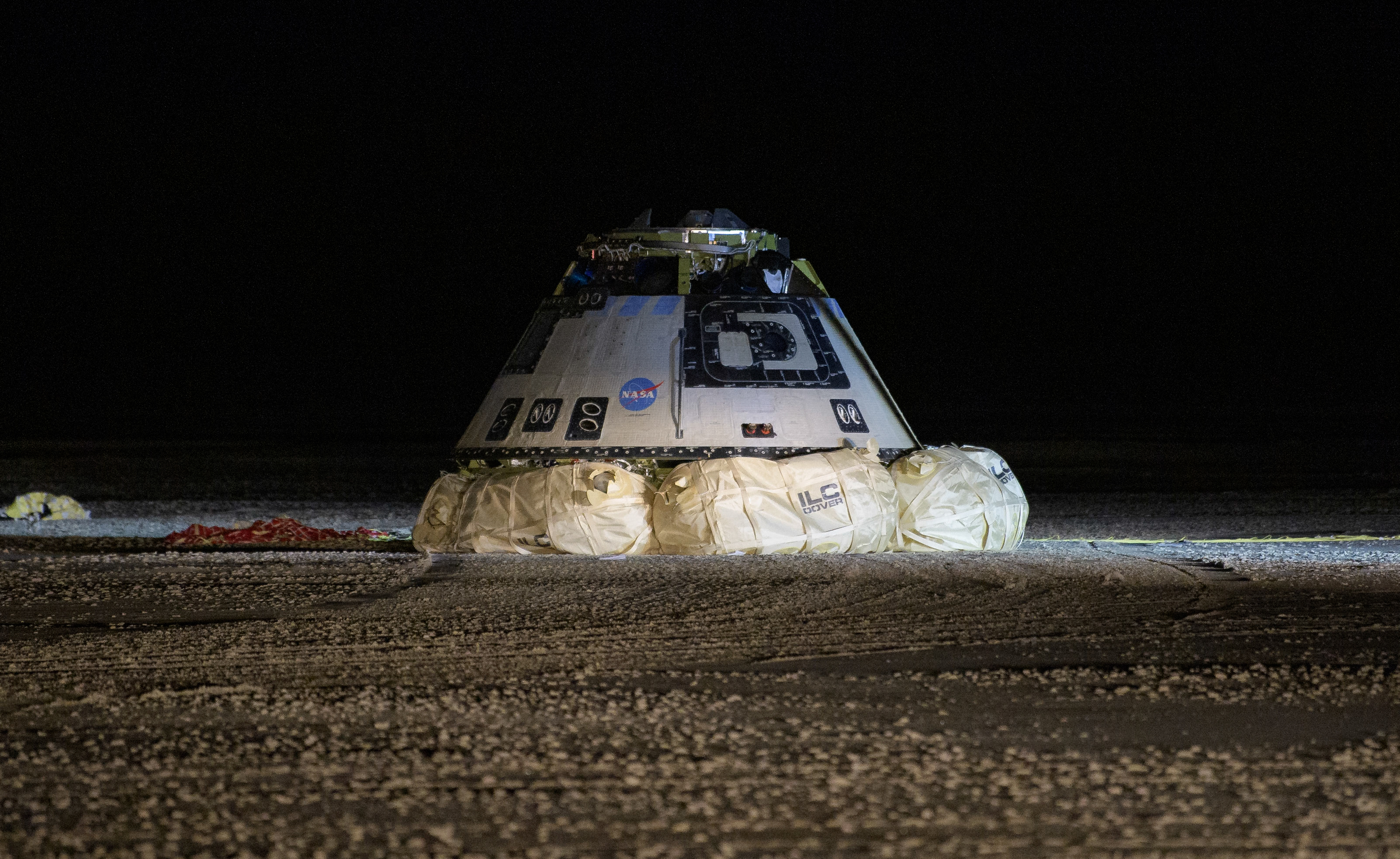
Starliner’s landing sequence will commence at an altitude of 30,000 feet (9,000 meters), with a set of drogue parachutes and later the main canopies “reefed” at 8,000 feet (2,400 meters). Touching down under parachutes and airbags, Wilmore and Williams will be extracted from the spacecraft, helicoptered to a landing field and then flown back to NASA’s Johnson Space Center (JSC) in Houston, Texas.

